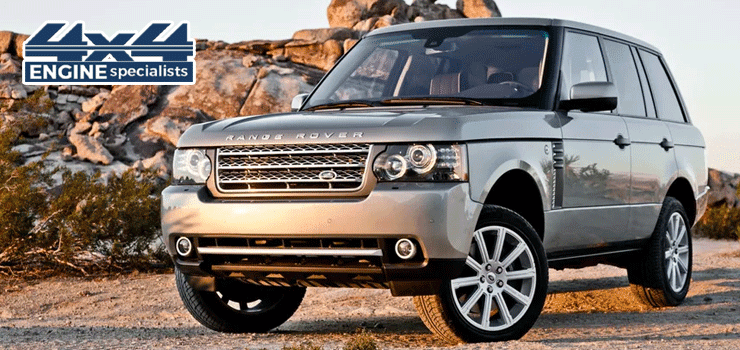The Range Rover 2.0 engine has undergone significant evolution over the years, reflecting advancements in automotive technology and changing market demands. Initially known for its robust performance and off-road capabilities, the Range Rover has continuously improved its engine design to enhance fuel efficiency, reduce emissions, and deliver a smoother driving experience. We delves into the key milestones in the development of the Range Rover 2.0 engines, exploring how it has transformed from its early iterations to the modern marvel it is today.
Early Beginnings: The First Generation of Range Rover Engines
The first Range Rover, launched in 1970, featured a V8 engine, but the concept of a 2.0-liter engine was not introduced until later. In the early 1990s, as environmental concerns and fuel economy became more prominent, Land Rover began exploring smaller engine options. The initial 2.0-liter engines were designed to offer a balance between power and efficiency, catering to a growing market segment that prioritized eco-friendliness without compromising on performance. These early engines laid the foundation for future innovations, emphasizing durability and versatility.
The Shift Towards Turbocharging
One of the most significant shifts in the design of the Range Rover 2.0 engine came with the introduction of turbocharging technology. Turbocharged engines offer increased power output without the need for a larger displacement, making them more efficient and environmentally friendly. By the late 2000s, turbocharged 2.0-liter engines became a standard offering in the Range Rover lineup. This transition marked a pivotal moment, as it allowed for greater performance capabilities and improved fuel efficiency, meeting stricter emission regulations and consumer demands for greener vehicles.
Incorporating Advanced Fuel Injection Systems
Fuel injection technology has played a crucial role in the evolution of the Range Rover 2.0 engine. Earlier models relied on traditional carburetors, which were less efficient and produced higher emissions. The shift to direct fuel injection systems in the 2010s brought about significant improvements in engine performance and fuel economy. These systems allow for precise control of the fuel-air mixture, resulting in more complete combustion, reduced fuel consumption, and lower emissions. The integration of advanced fuel injection systems represents a key advancement in the quest for greener, more efficient engines.
The Introduction of Hybrid Technology
In response to increasing environmental awareness and stringent emission standards, Land Rover introduced hybrid technology to the Range Rover lineup. The combination of a 2.0-liter petrol engine with an electric motor has revolutionized the engine design, offering impressive fuel efficiency and reduced emissions. The hybrid Range Rover models, introduced in the mid-2010s, showcase the brand’s commitment to sustainability while maintaining the luxury and performance standards expected of a Range Rover. This innovation has set a new benchmark in the industry, demonstrating how traditional combustion engines can coexist with modern electric powertrains.
Enhancing Performance with Lightweight Materials
Weight reduction has been a critical focus in the evolution of the Range Rover engine. Utilizing lightweight materials such as aluminum and magnesium alloys has significantly improved the power-to-weight ratio, enhancing overall vehicle performance and fuel efficiency. The adoption of these materials has not only reduced the engine’s weight but also contributed to better handling and agility. This shift towards lightweight construction reflects a broader industry trend aimed at improving vehicle dynamics and sustainability.
The Role of Electronic Control Units (ECUs)
The integration of sophisticated Electronic Control Units (ECUs) has revolutionized the Range Rover 2.0 engine design. ECUs manage various engine functions, including fuel injection, ignition timing, and turbocharging, optimizing performance and efficiency. The use of advanced ECUs has enabled more precise engine tuning, ensuring optimal performance under various driving conditions. This technological advancement has been pivotal in enhancing the reliability and responsiveness of the Range Rover 2.0 engine, contributing to a superior driving experience.
Meeting Emission Standards with Advanced Exhaust Systems
Compliance with stringent emission standards has driven the development of advanced exhaust systems in the Range Rover 2.0 engine. Modern exhaust systems incorporate catalytic converters, particulate filters, and selective catalytic reduction (SCR) technology to minimize harmful emissions. These systems work in tandem with the engine to reduce pollutants such as nitrogen oxides (NOx) and particulate matter. The continuous improvement of exhaust technologies underscores Land Rover’s commitment to environmental stewardship and regulatory compliance.
Future Prospects: The Next Generation of Range Rover 2.0 Engines
The future of the Range Rover 2.0 engine lies in further advancements in hybrid and electric technologies. With the automotive industry rapidly shifting towards electrification, Land Rover is poised to introduce more hybrid and fully electric models. Innovations such as solid-state batteries, enhanced regenerative braking systems, and advanced energy management systems will play a crucial role in the next generation of Range Rover engines. These developments promise to deliver even greater efficiency, performance, and sustainability, ensuring that the Range Rover remains at the forefront of automotive engineering.
Conclusion
The evolution of the Range Rover 2.0 engine is a testament to Land Rover’s commitment to innovation, performance, and sustainability. From its early beginnings to the integration of cutting-edge technologies, the Range Rover 2.0 engine has continuously adapted to meet the changing demands of the automotive landscape. As the industry moves towards a more sustainable future, the Range Rover 2.0 engine is set to evolve further, incorporating the latest advancements in hybrid and electric powertrains. This ongoing evolution ensures that the Range Rover remains a symbol of luxury, performance, and environmental consciousness in the years to come.


